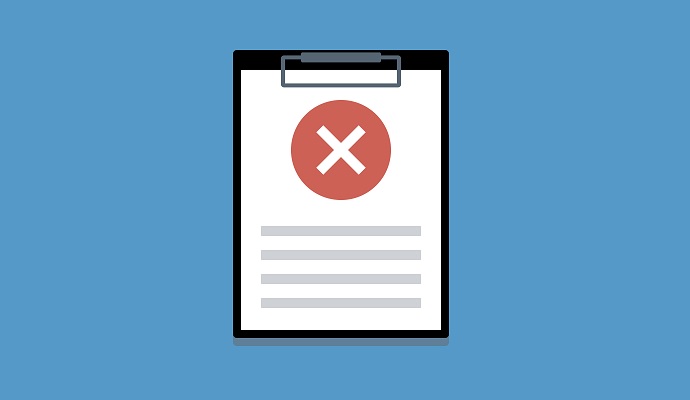How can a lab practice better understand denials and rejections? How can they prevent these repeated denials from happening? One of the biggest hurdles affecting healthcare reimbursement is insurance claim denials. In the billing world, these denials and rejections are often used interchangeably. It can put a significant negative effect on your entire revenue cycle management as this misunderstanding may lead to expensive mistakes.
It is highly necessary to streamline laboratory billing services to avoid these complications happening due to inefficient denial management.
Contents
What Are Claim Denials & Rejections?
Denied claims are defined as those claims that get negative determination; these are adjudicated and processed by the insurance payers. You can not resubmit these claims. First, you may write a reconsideration request or appropriate appeal after knowing the reason why the claim was denied. While, if you submit it without a request or appeal then there are chances it would be denied as a duplicate.
It will also cost you money & waste your time while the claim will not be reimbursed. On the other hand, rejected claims are defined as those claims that are rejected by insurance as they do not meet the basic formatting and specific data requirements introduced by the CMS (Centers for Medicare and Medicaid Services).
Insurance companies do not process these claims as they were never entered and processed by their internal systems. So, payers can not process rejected claims when they did not even receive the claims. Once the mistakes are corrected you can resubmit these claims easily. These mistakes can be slight and can be typically corrected abruptly, i.e, patient insurance ID exchanged digit.
Reasons of Claim Denials & Rejections
Duplicate Claims
Before resending any claim to avoid duplicate claims, always double-check the status of your claim. Verify initial denial reason and check ERA for earlier posted claims. Do not resubmit claims when a partial payment is made and identical claims are still pending. Avoid automatic rebilling and provide documentation with a request for redetermination to submit an appeal for rejected claims.
Invalid/Missing Payer ID
Check the Id of the payer. Check if it is valid or not missing. You can search out the list and access the clearinghouse portal for checking the connected payers to get the updated Id. For the type of claims such as professional, institutional, etc, you must use the correct payer Id plus include the secondary payer Id if needed.
Eligibility
Eligibility verification enables you to verify the information of the patients before the visit. Some examples of the common rejected descriptions are below;
- Subscriber ID and subscriber not found.
- While using Medicare and Medicaid, the patient’s relationship to the insured must be self.
- Entity’s contract/member number.
- For benefits, the entity is not eligible for submitted dates.
For preventing eligibility denials and rejections, you must assure that your patients have provided correct data during or before scheduling/registration, etc. Try to prevent errors in data entry and obtain copies of the insurance cards of patients. In addition to this, obtain authorization when necessary and verify benefit coverage as well as dates of eligibility.
Diagnosis Code
You must make sure that you are using the updated and accurate codes per procedure at the highest level. This helps you get the most revenue per service. However, the codes must be possibly specified. Some most common denied descriptions are given below;
- Not effective or invalid on the service date.
- Should use valid ICD-10-CM diagnosis code.
- Incorrect principal diagnosis code or invalid diagnosis code.
Be sure to verify the diagnosis is active on the service date to avoid rejections due to invalid or missing diagnosis codes. As the procedure is performed, make sure the diagnosis is consistent.
Invalid/Missing NPI Of Billing Provider
You must get the most updated provider information or tax Id for your lab practice. Common reasons for such types of rejections are as following;
- Entity’s national provider identifier (NPI).
- On this entity’s behalf, the submitter is not approved for electronic claim submission.
- With this payer, the provider is not approved/enrolled for EDI claims.
To avoid such denials, first, confirm the provider enrollment with the clearinghouse to submit claims electronically and confirm if the provider is credentialed with the payers. Ensure the correct tax ID is credentialed and the right individual or group NPI is credentialed.
Strategies To Improve Denial Rates
- Provide training to billing staff on how to properly handle rejections quickly.
- Work with insurance agencies to revise, discuss, eliminate contractual requirements that lead to overturned denials upon appeal.
- Analyze & track trends in payer rejections. Work on how to fix these issues quickly after categorizing denials.
- Identify difficulties and trends before sending claims to insurance payers. Schedule chart audits for documentation and data quality.
- Utilize advanced software or take professional support of an outsourced billing expert to optimize claim denial management.
- Perform predictive analysis to flag possible rejections, address them before claim submission.
Get Highest Collections & Set Your Business Up
Still not meeting your financial targets & feeling overstressed? Don’t wait so much and outsource your laboratory billing services. Laboratory Billings is a high-class lab billing company having wide expertise in world-class revenue cycle management services. We have the validated infrastructure, processes, and needed capabilities to identify the blocks heading to denied claims and lower payments.

I am Arjun Kumar. I am the owner and administrator of Finance Gradeup. I have completed my education in Arts & Technology. Arjun Kumar usually has interests in playing games, reading and writing. He was a brilliant student during his college days. He also works for many private companies, but the main interest of Arjun Kumar is digital marketing. He thinks that reading is a must before providing any quality information to his readers. You can find Arjun Kumar on much social media handles online, or you can learn more about him in about us page.





